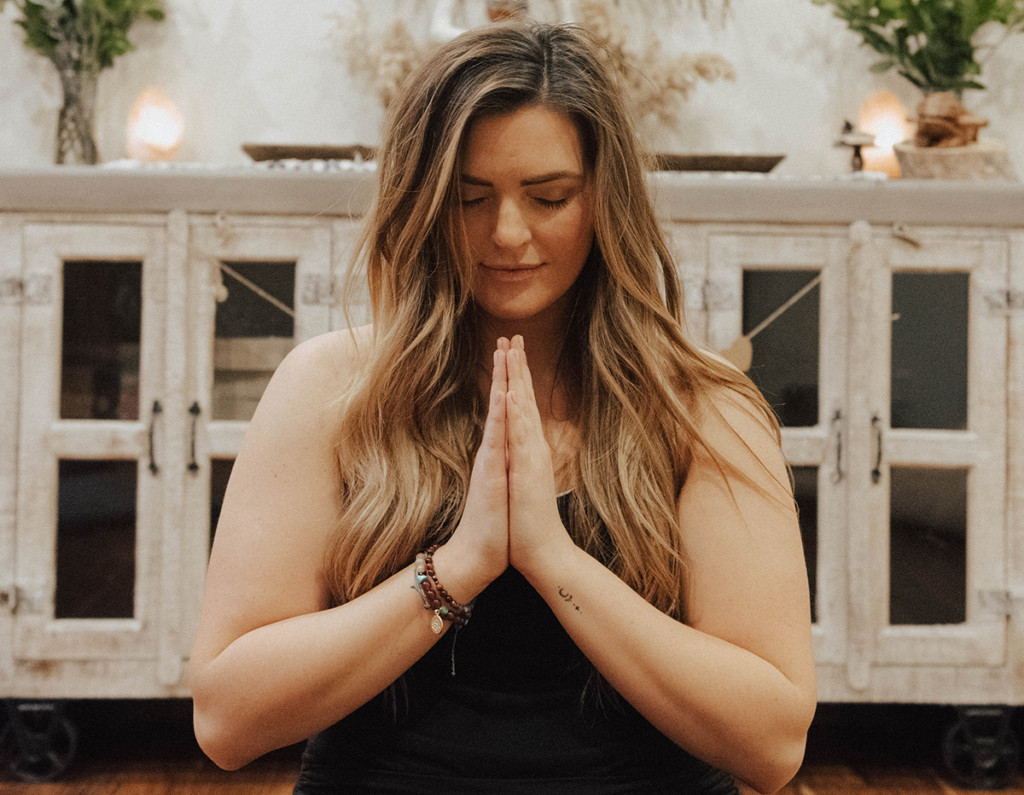
Few positions are more ubiquitous in yoga practice than Anjali Mudra (Prayer Position). We often practice Anjali Mudra to begin and end a class. We begin and end Surya Namaskar (Sun Salutation) in Anjali Mudra. On silent meditation retreats, it can mean lots of things: “I acknowledge you,” “thank you,” “may I pass by?,” or “hello.”
Anjali Mudra’s roots span Buddhist, Hindu, Jain and Sikh traditions. As such, its meaning, and the meaning of its often accompanying verbalization, “namaste,” is subject to lots of interpretations.
Many Western yoga asana classes interpret Anjali Mudra, accompanied by “namaste,” like this: “The divine in me bows to the divine in you.” However, many traditional practitioners consider this interpretation to be a Western overlay. Namaste, they say, is really meant to be a simple “hello.” The literal meaning of namaste is “I salute you.”
When I traveled to India, Anjali Mudra was used as a simple, respectful greeting. It served as a kind acknowledgment of the momentary meeting of two individuals.
It can be confusing to sort out all the meanings humans have applied to Anjali Mudra and “namaste.” So which one is the “true” meaning? I guess we have to honor the source of each interpretation. I tend to prefer one Buddhist’s interpretation that I heard many years ago—that Anjali Mudra simply means “welcome.”
No matter the specific meaning, Anjali Mudra, whether or not it’s accompanied by “namaste,” is a gesture of respect and greeting. There is no documented scientific evidence of this, but some yoga teachers claim that joining our hands at the heart center integrates the two hemispheres of the brain. Still others claim that it strengthens the heart. Who knows?
Anjali Mudra: Firm and Soft
I like to practice Anjali Mudra after sitting meditation. Joining my hands over my heart allows me to feel the energy exchange between my hands. The quality of contact—how firmly or softly I find myself pressing—tells me about the state of my mind. Firm pressure indicates strong intention, but if I press too firmly, the natural exchange I feel between my hands becomes dull or numb. Too light a touch feels disconnected. Here again, the energy flow between your hands will not be clear. So I practice to find balance. Remember that Sutra 2.46 in Patanjali’s Yoga Sutras says, “The physical posture is steady and comfortable.” Balance is key.
Practicing Anjali Mudra
- Sit in Sukhasana (Easy Pose) or stand in Tadasana (Mountain Pose).
- Join your palms at chest level, with your thumbs touching your sternum.
- Allow your fingers, thumbs and heels of your hands to touch. The knuckles at the base of your fingers may or may not be in contact.
- Close your eyes. This is optional, but for many of us, this can help focus awareness inward.
- Feel the contact between your hands. Are you pressing hard? Or do the hands feel as if they are pulling away from one another? Find what feels like balance for you at this moment.
- Tune in. What is the sensation of contact? How would you describe it—tingling, pressure, vibration or something else entirely?
- Stay for 5 to 10 deep, relaxed breaths and notice how these sensations change over time.
- Release your hands down to your sides.
Most important is developing your own relationship with Anjali Mudra. Explore the contact of your hands, including using both a lighter and heavier touch. Practice both on and off your yoga mat. Use it as a form of thanks when a friend does you a favor. Be creative. Yoga is a practice of self-discovery. So we learn through experience. There’s no substitute for finding the truth for ourselves.
In the Kalama Sutta the Buddha said: “ … don’t go by reports, by legends, by traditions, by scripture, by logical conjecture, by inference, by analogies, by agreement through pondering views, by probability, or by the thought, ‘This contemplative is our teacher.’ When you know for yourselves that, ‘These qualities are skillful; these qualities are blameless; these qualities are praised by the wise; these qualities, when adopted and carried out, lead to welfare and to happiness’ — then you should enter and remain in them.”
